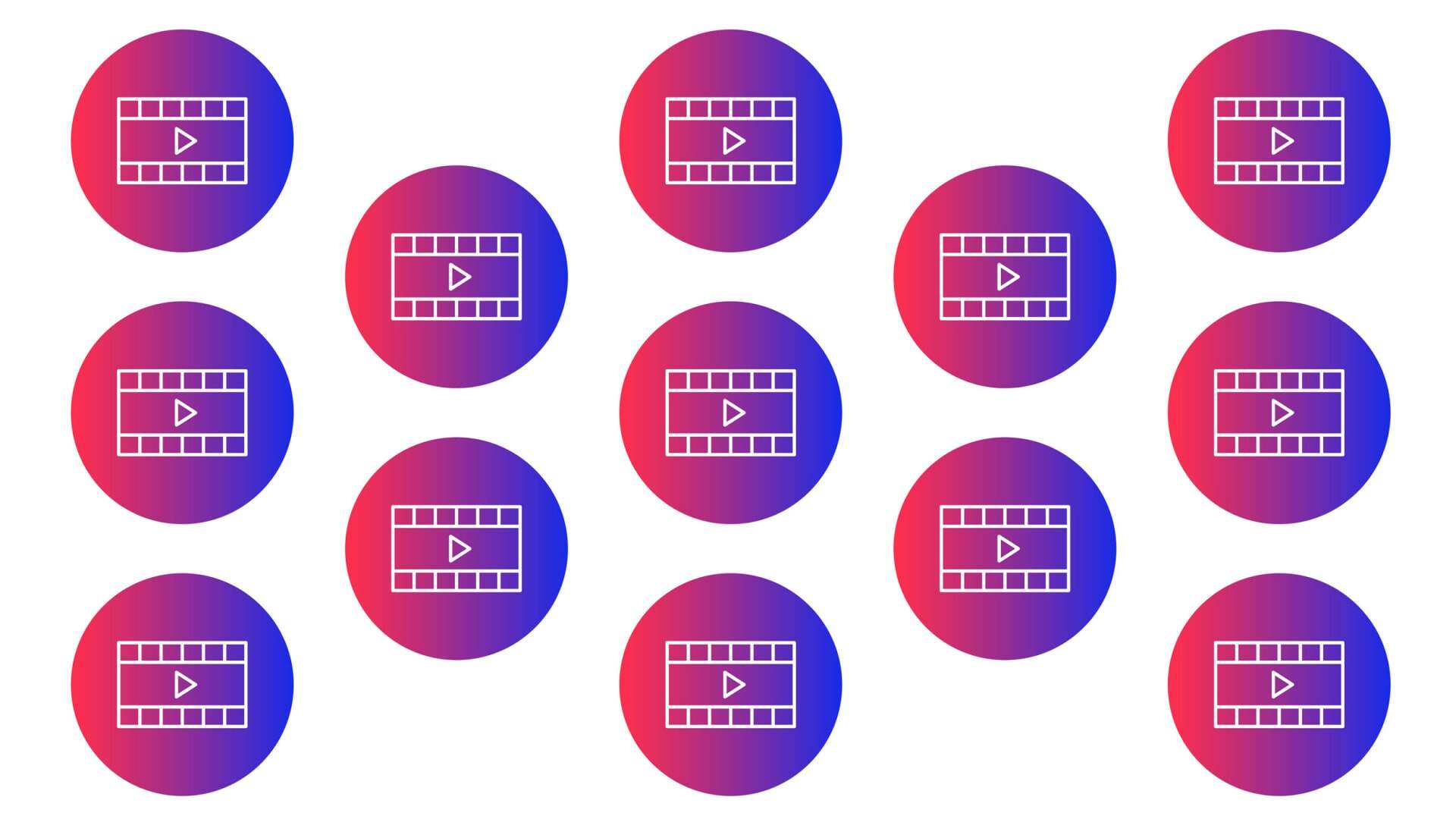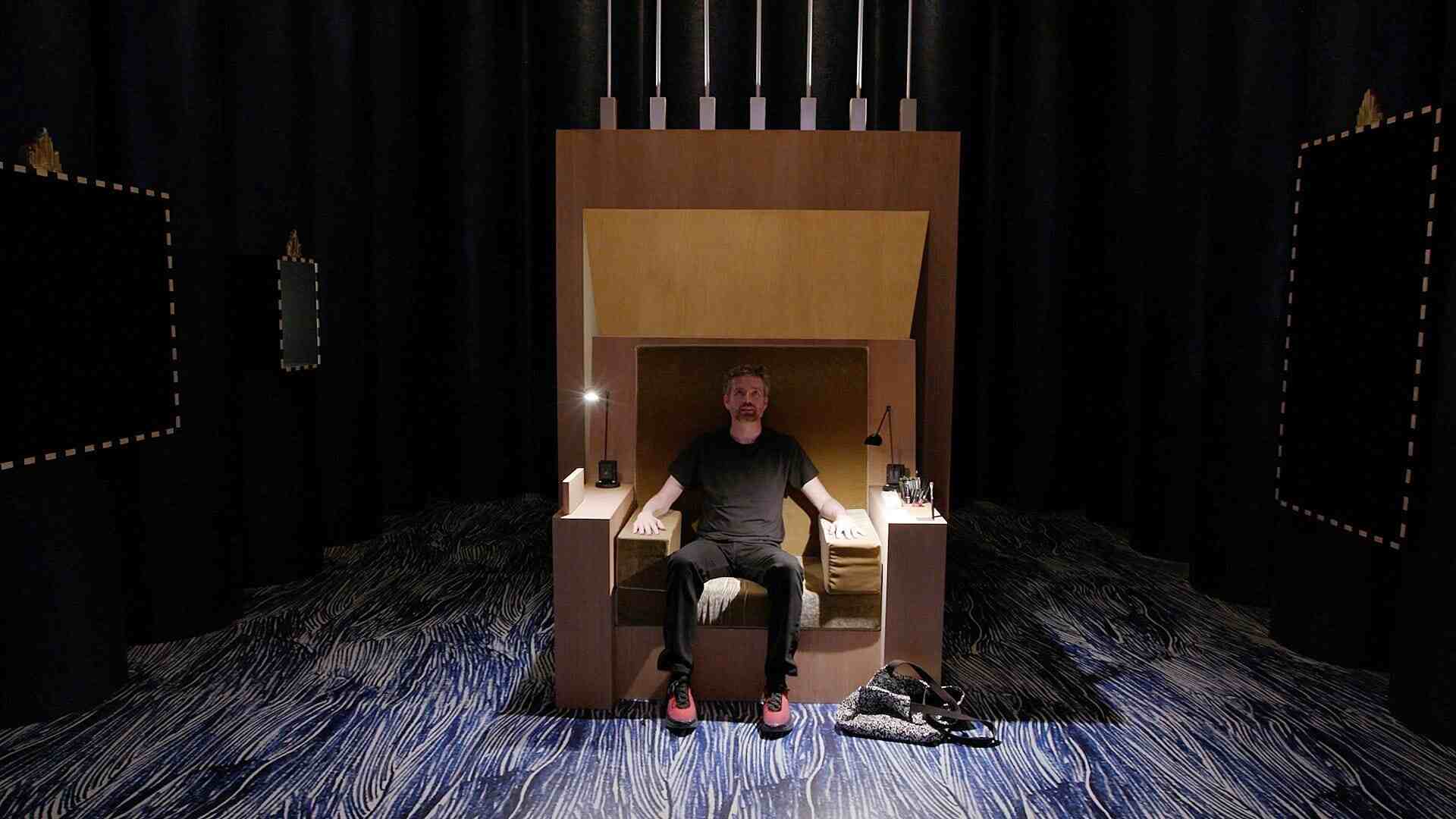- | 8:00 am
Inside Volkswagen’s big bet on electric vehicles
Volkswagen is doubling down on electric vehicles with the opening of a cutting-edge battery testing facility in Tennessee.
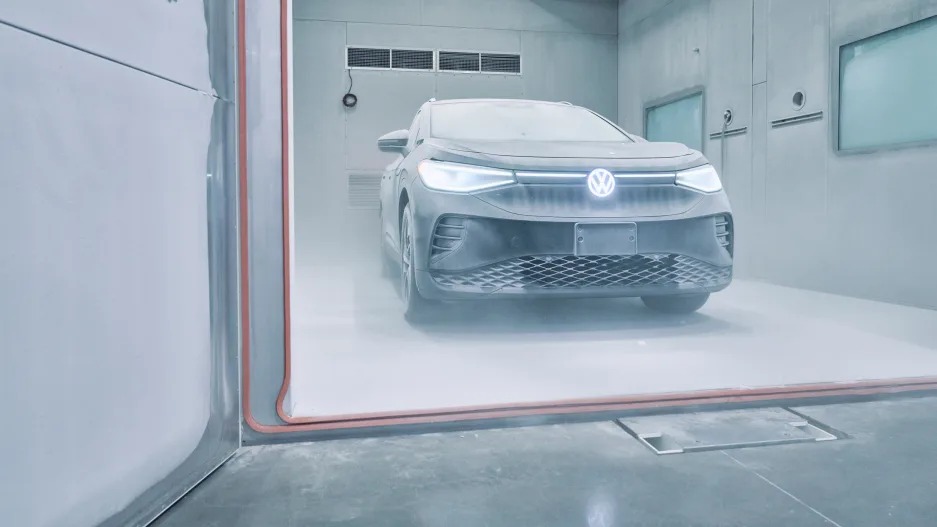
When electrical engineer Charles Abend opens the giant double doors to the temperature chamber, a new Volkswagen ID.4 emerges from a plume of ice-cold smoke. Tiny particles of snowy condensation flutter in the air above the car, just below the lights mounted in the chamber’s ceiling. As Abend describes it, temperatures inside this reinforced chamber can drop to -112°F to mimic the harshest winter conditions and to simulate the wear and tear of six years of Michigan winters in just six weeks’ time. It can also heat up to 356 °F to challenge the car and its battery under the most taxing summer or desert conditions. The set up almost feels like a space-age episode of “The Price Is Right.”
By the looks of it, the chamber could really be anywhere; surrounded by stainless steel, white paint and the seemingly sky-high rafters of a warehouse. In fact, it is tucked inside Volkswagen’s new 32,000-square foot electric battery engineering lab in Chattanooga, TN, where the company runs tests on roughly 100 lithium ion batteries and battery prototypes per year. The lab upends age-old images of dusty assembly lines and automobile factories in America. With its temperature chamber and a host of other tests designed to push VWs batteries to the limits, the lab holds the promise of the German car manufacturer’s giant leap toward sustainability, with the end goal of capturing 55% of the EV market by 2030.
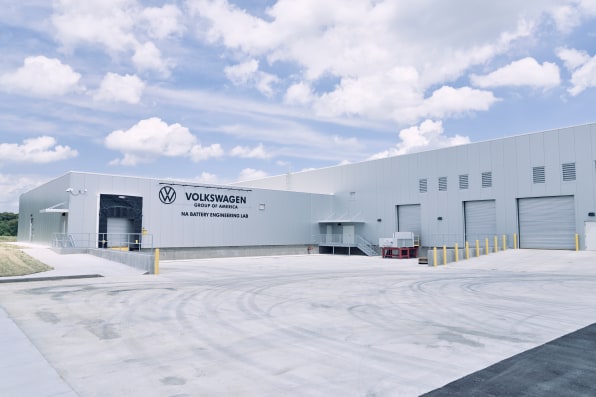
Abend is the electrical engineer who runs the lab. His work at the company started in 2015, with combustion engines and the Passat, a car that VW first debuted in the 1970s leveraging its then industry-leading German technology around front wheel drive. Today, Abend finds himself nearly 180 degrees from that role. In June 2022, he helped open the $22 million lab in Chattanooga, after three years of research, planning and construction. While Volkswagen has similar labs in Germany and China, this is its first in North America, placing VW on the bleeding edge of EV technology on the continent.
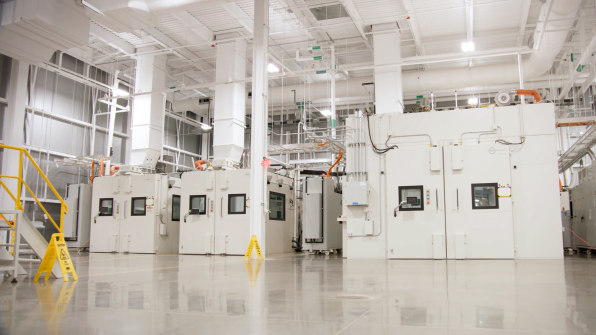
VW isn’t alone, though. Ford (in partnership with SK Innovation) has a battery manufacturing campus in Kentucky. GM’s is in Michigan. Hyundai has plans for a new plant in Georgia. Think tank Atlas Public Policy released a report in November 2022 tallying EV battery manufacturing outfits in the U.S. The total reached $128 billion in announced projects tied to electric vehicle plants, battery recycling and battery development. It’s a clear path to control an unreliable supply chain, maintain some level of agility in a fast-growth sector, and capture opportunity as legislation ramps up encouraging a move away from gas-guzzling vehicles.
VW’s Chattanooga effort leverages some of the company’s best design and engineering minds to build new technologies that can set a high standard for environmental impact in an industry that sits at the heart of American manufacturing. Abend says he visited every lab operated by manufacturers outside of VW in the U.S., as well as the company’s own lab in Germany to prep for this project: “I got a good feel on what’s available in the market, what Germany and China did well, and what they wish they didn’t do. I wasn’t going into the dark alone on this. We were able to utilize all of that brain power we already had inside the company.”
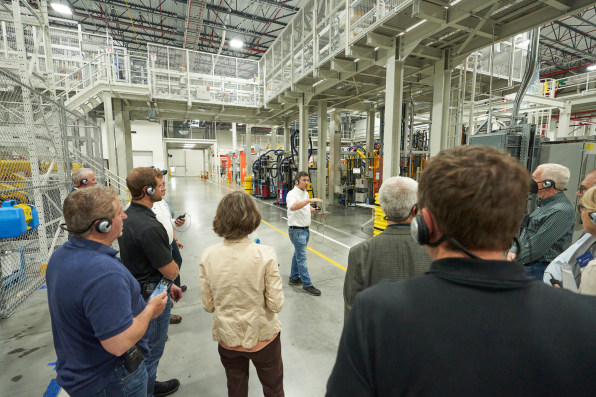
The year 2022 has proven a tipping point for electric vehicles, says John DeBoer, head of Siemens eMobility North America, which works with manufacturers, cities, fleet operators and other organizations to build products, software and infrastructure around e-mobility solutions. “It has been an amazing inflection year,” says DeBoer of 2022. “It’s changed from a startup to the future of transport.” Several factors, he says, contributed to that end: A few car makers moved to produce electric vehicles for less than $50,000. There’s also been increased availability of EV vehicles for transit (the first 1,000 Rivian delivery vans at Amazon, for example). The Inflation Reduction Act provided $1,000 tax credits toward EV vehicle purchases, and then, of course the U.S. experienced a hopeful jump to a 50th percentile global ranking in EV battery charging capabilities.
On the whole, the EV market is fast-growth in so many ways. Startup Electrify America (in which both Siemens and VW have invested) has raised $450 million to build out fast charging stations nationwide, and one report from Markets and Markets on high voltage battery market size show growth of up to $89.1 billion by 2028 (up from $8.9 billion in 2018). DeBoer admits that the country’s EV development is still in its early stages, these factors prepare Volkswagen to catch whatever momentum is being generated by the government, consumers, and innovation in the business world.
Wolfgang Maluche, VP of Engineering at Volkswagen of America, says the company plans to invest $7.1 billion into the North American EV market (Canada, U.S. and Mexico) through 2027. By 2030, VW Group brands (VW, Porsche and Audi) plan to offer U.S. consumers 25 electric vehicle models—right now the group has eight on the market. With that goal in mind, there’s plenty of design and engineering work to be done. For now, the point of the lab is to establish proof of concept with the battery testing and ultimately improve each generation of Volkswagen EV production. Afterall, says Maluche, the lab was carefully designed to house a handful of tests meant to place these batteries under tremendous circumstances, from extreme temperatures to intense corrosion to water damage and more, in the name of bolstering the company’s EV agenda.
“If you weight lift and don’t train, but you want to lift 400 pounds without any training, you will hurt yourself. We have a step-by-step approach.” Maluche is also careful to point out that the testing done in the Chattanooga lab is one-of-a-kind, yet still streamlined across the company’s three labs, meeting safety standards in each market. In the U.S. there are two big safety tests all lithium ion batteries must undergo (UN 38.3 and SAE J2464), which address circumstances of transporting batteries as well as conditions and events beyond the battery’s normal operating range. VW, though, adds to those tests more extreme internal standards as well as international testing routines (DIN and ISO protocols). Localizing much of the process in the southeastern U.S. has also been a key focus in Chattanooga. The company uses a battery cell supplier that’s based in Georgia to save time and money throughout the production and testing process, as well as dropping any unused energy generated back into the grid. (Maluche says he expects the lab to earn LEED certification by its first birthday.)

The lab’s tests are designed to mimic long periods of extreme conditions in a compressed amount of time. “We test for all kinds of use cases,” says Maluche. “We simulate the life of a car and compress it into a couple of weeks of testing.” During a corrosion test, for example, the battery is packed in a proprietary chemical mixture to simulate mud and the effects of salt spray aging. While VW engineering team won’t share much more about where and how the test unfolds, Abend says the battery is attacked from every angle with corrosive materials, all while some intense safety software ensures it is sealed for the entire process and that it discharges appropriately at exactly the right time. The software, the team says, can alert the staff to issues in testing, mark downtime of test benches, schedule upcoming battery calibration or testing. Overall, it serves as a great partner and allows for a leaner, faster round-the-clock operation at the lab.
In an endurance test, engineers simulate dust loads, each particle 1/70th the width of a strand of human hair. The goal is to ensure that the batteries are sealed well enough that even in the most insane dust-air ratios the mechanics and electrical aspects of the battery remain intact and functioning at the highest level. The water test, meanwhile, mimics weather emergencies and accidents, immersing the hot batteries in up to eight cubic meters of cold water.
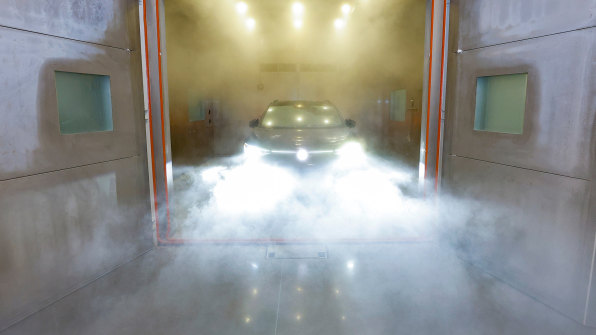
Another temperature chamber tests for thermal shock. There, the batteries are tested for weld and fastener durability by moving them from extremely hot to extremely cold temperatures in rapid succession (a less than 15 second changeover). In three days, the team can perform 40 thermal tests—a process that would normally span 20 days in a real, non-simulated environment.
The lab’s crown jewel, though, is a multi-axis shaker table— a two-ton block of steel that stretches more than seven feet. The table sits on six individual pistons, enabling it to move with six degrees of freedom, allowing nearly any possible movement scenario within the testing environment. The battery is secured to the top of the table on a fixture with eight small hydraulic pistons, locking the battery into position. The table works in conjunction with a regenerative load cycler, a glycol conditioning unit and a climate chamber and can withstand a max acceleration of 16 g-force.
With it, engineers are able to place incredible force on an EV battery, as well as mimic 14,000 kilometers (or nearly 8,700 miles) of potholes and rugged driving conditions in just seven days. The table can also charge and discharge the battery constantly while maintaining three consistent speeds. Abend is still audibly giddy when he talks about the table: “It’s a fantastic design and it is surprisingly quiet. I’d seen it run in Germany before, but seeing it run here for the first time was a very happy moment.” In fact, he says, the shaker table informed much of how the lab was built, given the sheer power and force involved in its use. Construction teams dug an 80-by-80-foot hole into the lab’s foundation and filled it with 600,000 pounds of concrete to support the intensive testing planned at the site.
Despite the lab’s physicality, software has been a big component of creating a lab that is both smart and sustainable. Volkswagen hired a software company to integrate safety protocols that allow for remote operation of some non-manual assessments. An automatic reporting software system was custom-made for the lab, so that VW engineers are immediately aware of any battery design hiccups that arise during testing. This allows designers to quickly and efficiently incorporate any learnings from the tests into the battery’s next generation. “In a year’s time, we are trying to get through 100 battery packs and more than 1,000 individual tests on those packs,” says Abend. “We need to be laser focused. We had to have our own IT and security teams on board to make sure it was as safe and robust as possible. I think we’re 90 percent there.”
There are roughly 30 engineers working at the lab, with 10 of the group focused specifically on testing and 20 individuals intent on high voltage battery development. And while the lab is still very young, Abend realizes he’ll eventually need to scale up on talent as it grows in the coming years. “We’re looking for lifelong learners,” he says.
Abend acknowledges that the work his team is doing at the lab is new and specialized, so much of the experience he’ll eventually need to add headcount can only be learned firsthand on the job. For now, he and Maluche are excited about the progress the team has made so far and are anxious to build on the lab’s collective tacit knowledge and skill in terms of testing and building high voltage battery packs. “It’s a starting point,” says Maluche. “There’s a huge transition going on in the whole industry and VW is very much front and center, committed to lead this transition. We’re breaking ground for these new technologies. It’s exciting to be at the front line where transition and change happen.”














